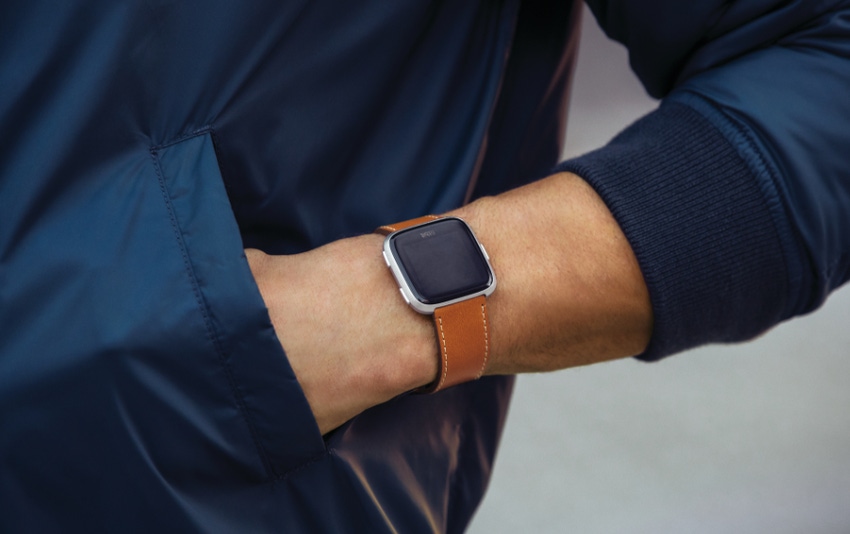Fitbit financials tumble but that might not worry Google
Fitbit might not be the profit bonanza it once was, but with sales increasing it offers Google another interface to collect data and launch new services.
February 21, 2020

Fitbit might not be the profit bonanza it once was, but with sales increasing it offers Google another interface to collect data and launch new services.
Although the financial results do not seem the most attractive at first glance, it is always worth remembering what the new objective of this business is likely to be. Google acquired Fitbit in November, and while the Mountain View residents never say no to money, there is a bigger picture.
Fitbit is most likely about exposure, increasing the number of Google interfaces in society and offering more opportunity for the internet giant to create services. This is where Google’s expertise lies, in software not hardware, but it does occasionally need to encourage the development and adoption of supporting ecosystems to realise its own goals. If more smart devices are being worn by consumers, the greater the opportunity for Google to make money.
“In 2019, we continued to advance our mission of making health accessible to more people around the world by delivering devices, software and services at affordable prices that help improve peoples’ health,” said CEO James Park.
“As a result, we sold 16 million devices and our smartwatch business grew 45% at retail, due to strong demand for Versa 2. Our community of active users increased to nearly 30 million, and Fitbit Health Solutions grew 17%, underscoring the strength of the Fitbit brand.”
2019 | 2018 | Change | |
Total Revenue | 1,434.8 | 1,512 | (5%) |
Net Income | (120.8) | (320.7) | (264%) |
Devices Sold | 16 | 13.9 | 15% |
Monthly Active Users (MAUs) | 29.6 | 27.6 | 7% |
Figures in millions (US$)
The full year financial measurements are clearly not heading in the right direction, though part of this can be attributed to the average selling price of the devices decreasing 17% to $87. This trend is thanks to the decision to introduce more accessible and affordable devices, increase the range of devices and various promotions or offers.
Perhaps the most important statistic to note here is the number of devices sold over the period. This is up 15% on 2018, while 61% of sales came from completely new customers. For the repeat customers, 54% came from customers who were inactive during a prior period meaning Fitbit is re-engaging those it might have lost as well.
Google might have spent $2.1 billion to acquire the Fitbit business, but it was highly unlikely going to be driven by the direct revenues it would achieve. $1.434 billion is nothing to turn you nose up at, but it is a drop in the ocean if Google can scale wearable devices in the same way it has done to smart speakers.
Prior to the entry of Google and Amazon, the smart speaker segment was sluggish. Adoption was almost non-existent, and interest was even lower. But in introducing their own, more affordable, devices and very cash-intensive advertising campaigns, these two internet giants drove up engagement and sales, whilst also forcing competitors to create their own products.
Looking at the final quarter of 2019, Strategy Analytics estimates that 55 million devices were sold globally, with Google collecting a 24.9% market share. Others are catching-up, but that won’t bother Google.
Year | Smart Speaker Shipments | Google Market Share |
2015 | 1.4 million | 0% |
2016 | 9.4 million | 4% |
2017 | 33.6 million | 28% |
2018 | 66.3 million | 26% |
2019 | 146.9 million | 20% |
Figure curtesy of Strategic Analytics
“Amazon and Google have been the driving force for smart speaker adoption outside of China thanks to their aggressive tactics of selling their products at very low prices in order to maximise the size of their voice assistant user bases,” said David Watkins, Director of Intelligent Home at Strategy Analytics.
“This approach has meant that there has been very little opportunity for other brands to gain a foothold in the market. There are no signs of this changing anytime soon, in fact I wouldn’t be surprised if we start to see both companies step up their giveaway promotions this year with further partnerships with popular media services and brands. Maybe one of them will just go the whole hog and post a free speaker to every home!”
The strategy for smart speakers was simple; get as much cheap hardware into the hands of consumers as possible and monetize software and services. The same strategy would theoretically work for wearables.
The more smart devices which are in the world, the more opportunity there is for Google to own the platform which services are build on and through. Android extends the Google influence into the smartphone world, the smart speaker gives it a voice interface in multiple rooms in the home and Wear OS is a version of Google’s Android operating system designed for smartwatches and other wearables.
From here on forward, pay a bit of attention to the financials of Fitbit, but be more interested in the number of devices which are being sold and the number of customers who are signing up to not only Fitbit’s health monitoring services, but also Google’s. This is a new data treasure trove for Google and a further opportunity to monetize digital lifestyles through a new interface.
About the Author(s)
You May Also Like











_1.jpg?width=300&auto=webp&quality=80&disable=upscale)


.png?width=800&auto=webp&quality=80&disable=upscale)